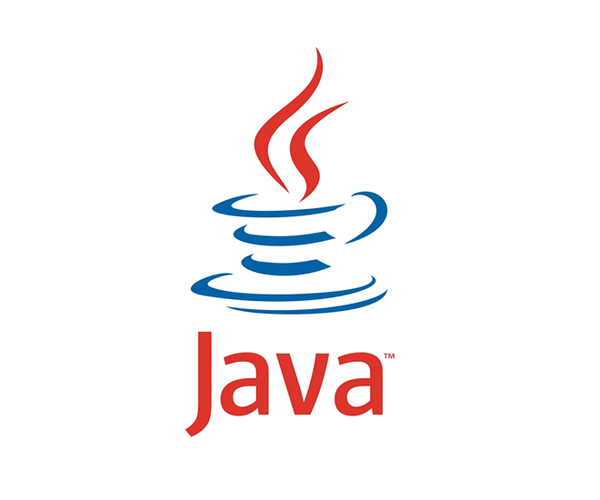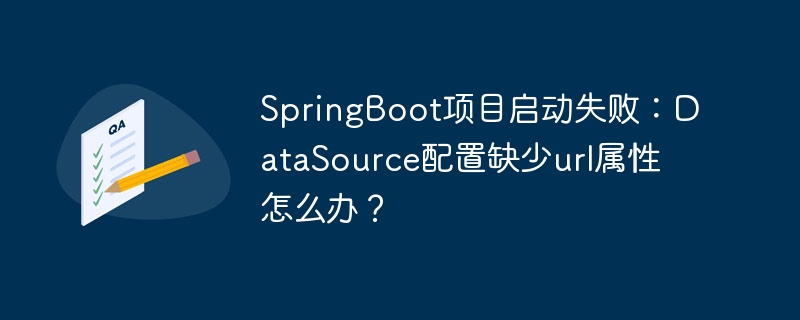Java中實現(xiàn)加密的核心在于使用jca/jce結合加密算法,1.選擇合適的加密算法需根據(jù)安全需求、性能和合規(guī)性;2.密鑰管理包括生成、存儲和分發(fā),可使用keygenerator和keystore;3.加密算法分為對稱(如aes)和非對稱(如rsa);4.消息摘要算法如sha-256用于數(shù)據(jù)完整性驗證;5.數(shù)字簽名結合非對稱加密與哈希確保數(shù)據(jù)來源可信;6.aes適合快速加密大量數(shù)據(jù),rsa適合身份驗證場景;7.密鑰應避免硬編碼,推薦使用keystore或hsm存儲;8.防止填充攻擊應選用安全填充模式如pkcs7padding,并正確使用隨機iv;9.定期輪換密鑰并更新算法版本以維持安全性。

Java中實現(xiàn)加密,核心在于使用Java提供的加密API(JCA/JCE)結合各種加密算法,對數(shù)據(jù)進行轉換,使其在傳輸或存儲過程中不易被未授權者讀取。 選擇合適的加密算法取決于你的安全需求、性能考慮以及合規(guī)性要求。

解決方案

Java加密主要涉及以下幾個方面:
立即學習“Java免費學習筆記(深入)”;

-
密鑰管理: 生成、存儲和分發(fā)密鑰是加密的基礎。Java提供了KeyGenerator類來生成密鑰,可以使用KeyStore來安全地存儲密鑰。
-
加密算法: Java支持多種加密算法,包括對稱加密算法(如AES、DES)和非對稱加密算法(如RSA)。
-
消息摘要算法: 用于生成數(shù)據(jù)的哈希值,常用于驗證數(shù)據(jù)的完整性。常見的算法有MD5、SHA-1、SHA-256等。
-
數(shù)字簽名: 結合非對稱加密和消息摘要,用于驗證數(shù)據(jù)的來源和完整性。
下面是一些常見加密算法的Java實現(xiàn)示例:
AES對稱加密:
import javax.crypto.Cipher; import javax.crypto.KeyGenerator; import javax.crypto.SecretKey; import javax.crypto.spec.SecretKeySpec; import java.security.NoSuchAlgorithmException; import java.util.Base64; public class AESExample { public static String encrypt(String data, SecretKey secretKey) throws Exception { Cipher cipher = Cipher.getInstance("AES"); cipher.init(Cipher.ENCRYPT_MODE, secretKey); byte[] encryptedBytes = cipher.doFinal(data.getBytes()); return Base64.getEncoder().encodeToString(encryptedBytes); } public static String decrypt(String encryptedData, SecretKey secretKey) throws Exception { Cipher cipher = Cipher.getInstance("AES"); cipher.init(Cipher.DECRYPT_MODE, secretKey); byte[] decryptedBytes = cipher.doFinal(Base64.getDecoder().decode(encryptedData)); return new String(decryptedBytes); } public static void main(String[] args) throws Exception { // 生成密鑰 KeyGenerator keyGenerator = KeyGenerator.getInstance("AES"); keyGenerator.init(128); // 可以選擇128, 192, 或 256位 SecretKey secretKey = keyGenerator.generateKey(); String data = "This is a secret message."; String encryptedData = encrypt(data, secretKey); String decryptedData = decrypt(encryptedData, secretKey); System.out.println("Original Data: " + data); System.out.println("Encrypted Data: " + encryptedData); System.out.println("Decrypted Data: " + decryptedData); // 從字節(jié)數(shù)組創(chuàng)建密鑰 byte[] keyBytes = secretKey.getEncoded(); SecretKey restoredKey = new SecretKeySpec(keyBytes, "AES"); String encryptedData2 = encrypt(data, restoredKey); System.out.println("Encrypted Data with restored key: " + encryptedData2); } }
RSA非對稱加密:
import java.security.*; import java.security.spec.PKCS8EncodedKeySpec; import java.security.spec.X509EncodedKeySpec; import java.util.Base64; import javax.crypto.Cipher; public class RSAExample { public static KeyPair generateKeyPair() throws Exception { KeyPairGenerator generator = KeyPairGenerator.getInstance("RSA"); generator.initialize(2048); // 密鑰長度 return generator.generateKeyPair(); } public static String encrypt(String data, PublicKey publicKey) throws Exception { Cipher cipher = Cipher.getInstance("RSA"); cipher.init(Cipher.ENCRYPT_MODE, publicKey); byte[] encryptedBytes = cipher.doFinal(data.getBytes()); return Base64.getEncoder().encodeToString(encryptedBytes); } public static String decrypt(String encryptedData, PrivateKey privateKey) throws Exception { Cipher cipher = Cipher.getInstance("RSA"); cipher.init(Cipher.DECRYPT_MODE, privateKey); byte[] decryptedBytes = cipher.doFinal(Base64.getDecoder().decode(encryptedData)); return new String(decryptedBytes); } public static void main(String[] args) throws Exception { KeyPair keyPair = generateKeyPair(); PublicKey publicKey = keyPair.getPublic(); PrivateKey privateKey = keyPair.getPrivate(); String data = "This is a secret message for RSA."; String encryptedData = encrypt(data, publicKey); String decryptedData = decrypt(encryptedData, privateKey); System.out.println("Original Data: " + data); System.out.println("Encrypted Data: " + encryptedData); System.out.println("Decrypted Data: " + decryptedData); // 公鑰和私鑰的存儲和恢復示例 byte[] publicKeyBytes = publicKey.getEncoded(); byte[] privateKeyBytes = privateKey.getEncoded(); // 恢復公鑰 X509EncodedKeySpec publicKeySpec = new X509EncodedKeySpec(publicKeyBytes); KeyFactory keyFactory = KeyFactory.getInstance("RSA"); PublicKey restoredPublicKey = keyFactory.generatePublic(publicKeySpec); // 恢復私鑰 PKCS8EncodedKeySpec privateKeySpec = new PKCS8EncodedKeySpec(privateKeyBytes); PrivateKey restoredPrivateKey = keyFactory.generatePrivate(privateKeySpec); String encryptedData2 = encrypt(data, restoredPublicKey); System.out.println("Encrypted Data with restored public key: " + encryptedData2); } }
SHA-256消息摘要:
import java.nio.charset.StandardCharsets; import java.security.MessageDigest; import java.security.NoSuchAlgorithmException; import java.util.HexFormat; public class SHA256Example { public static String hash(String data) throws NoSuchAlgorithmException { MessageDigest digest = MessageDigest.getInstance("SHA-256"); byte[] hashBytes = digest.digest(data.getBytes(StandardCharsets.UTF_8)); return HexFormat.of().formatHex(hashBytes); } public static void main(String[] args) throws NoSuchAlgorithmException { String data = "This is a message to be hashed."; String hash = hash(data); System.out.println("Original Data: " + data); System.out.println("SHA-256 Hash: " + hash); } }
如何選擇合適的加密算法?
選擇加密算法需要考慮安全性、性能和兼容性。AES通常用于對稱加密,RSA用于非對稱加密,SHA-256用于消息摘要。 根據(jù)具體的應用場景和安全需求,選擇合適的算法組合。 例如,對于需要快速加密大量數(shù)據(jù)的場景,AES是一個不錯的選擇;而對于需要進行身份驗證的場景,RSA配合數(shù)字簽名更為合適。 此外,還要注意算法的密鑰長度,較長的密鑰通常意味著更高的安全性,但也可能帶來更高的計算成本。
如何安全地存儲密鑰?
密鑰的安全存儲至關重要。 在Java中,可以使用KeyStore來存儲密鑰,并使用密碼保護密鑰庫。 避免將密鑰硬編碼在代碼中,或者以明文形式存儲在配置文件中。 可以考慮使用硬件安全模塊(HSM)來存儲密鑰,以提供更高的安全性。 另外,定期輪換密鑰也是一種良好的安全實踐。
如何防止常見的加密漏洞,如填充攻擊?
在加密過程中,需要注意填充模式的選擇。 不安全的填充模式可能導致填充攻擊。 使用安全的填充模式,如PKCS7Padding,可以有效地防止填充攻擊。 此外,還應該注意初始化向量(IV)的使用。 對于對稱加密算法,每次加密都應該使用不同的IV,以增加安全性。 對于CBC模式的加密算法,IV的隨機性至關重要。 另外,要避免使用過時的加密算法,及時更新到最新的安全版本。



















